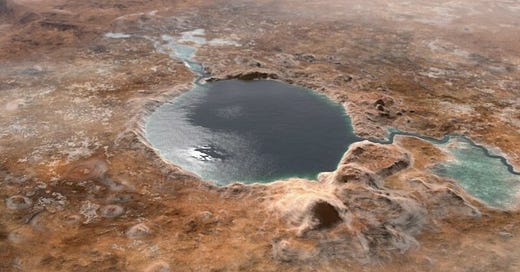Water Discovered on Mars
Researchers have discovered massive storage of sheltered water on Mars’s surface, and it could be the answer to human survival on the planet.
[Please note that this page contains affiliate links. If you choose to purchase after clicking a link, I may receive a commission at no extra cost to you.]
Researchers have discovered massive storage of sheltered water on Mars’s surface, and it could be the answer to human survival on the planet.
Scientists discovered icy water on Mars already or at least towards the surface of the frozen pole. In addition, they had uncovered evidence of water inside of minerals in the soil in the form of ice — underground closer to the equator.
Water on Mars
What scientists what to see is surface water close to the equator. That is where future Mars pioneers are most likely to inhabit, and a nearby water source would be precious for people, not only for growing food and drinking but also for fuel and oxygen.
The issue with surface water is it evaporates fast when it is found near the equator because of the pressure conditions and temperature.
Permafrost on Mars
Operated by Russia’s space agency and the European Space Agency (ESA), the ExoMars Orbiter named Roscosmos has found water on the red planet right below the surface of the Valles Marineris, which is an enormous canyon system that runs along Mars equator.
According to the scientists, the new water discovery is an area of the Netherlands and found within 3 feet from the topsoil.
They did not think it was water mixed with the soil minerals, and they believed it was likely ice.
Finding Water on Mars
As the water is beneath the surface, you cannot see it just by pictures.
The water was found by the Fine Resolution Epithermal Neutron Detector (FREND), which is attached to the ExoMars Orbiter. It looks for subatomic particles just below the red planet’s surface.
Neutrons form when overactive energetic particles called ‘galactic cosmic rays’ hit Mars. Dry soils give more neutrons than wet soil, and researchers can tell how much water is in the soil by looking at how many neutrons are emitted.
The unique technique used when observing is called FRENDs. It shows a higher spatial resolution over the previous measurements of this type, allowing scientists to see the features of water that couldn’t be seen before.
The Mars Mystery
The researchers now want to understand why the water on Mars doesn’t evaporate. Scientists believe it could somehow replenish itself, or it could be an unclear mixture of conditions that could be present in the valley of Valles Marineris.
The Mars canyon Valles Marineris is 2,500 miles long, which is about five times the length of the Grand Canyon.




